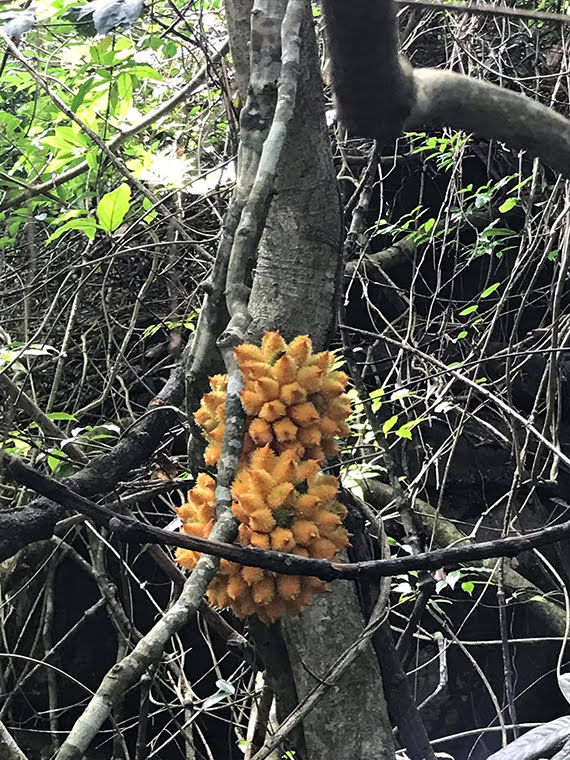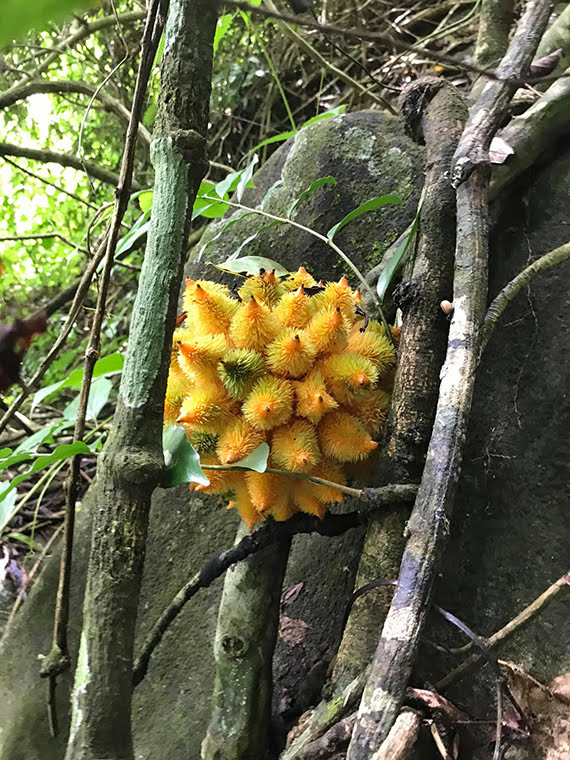Phytocrene oblonga Wall., Pl. Asiat. Rar. (Wallich). 3: 12 (1831).
Vietnamese name: Dây mộc tuyền, lụi mèo.
Latin Name: Phytocrene oblonga Wall.
Synonym Name: Gynocephalum oblongum (Wall.) Trécul; Miquelia cancellata Kurz
Family: Icacinaceae
Description:
FRUIT. Obovoid, symmetrical and elongated at the apex, red when mature. Epicarp with yellow long and thin hairs. Mesocarp thin but thicker in the accrescent part when dry. Calyx not persistent. Length 30–44 mm, width 15.0–25.0 mm, thickness 9–10 mm.
ENDOCARP. Brown, elliptical to oblong in lateral view, lenticular in transverse section, length ca 26.5 mm, width ca 12.3 mm, thickness ca 7 mm. No clear keel surrounding the endocarp in the plane of symmetry. Apex asymmetrical in lateral view; base rounded, slightly symmetrical. Outer surface of the endocarp pitted. Pits elongate longitudinally (concave area), ca 1.4–2.8 mm in length, representing most of the surface of the endocarp, organized longitudinally with ca 12 pits longitudinally and 7–12 pits transversally (ca 81–105 pits per face). Pits without tubercles. Endocarp wall ca 542–591 µm thick excluding pits (ca 200 µm thick including pits). Endocarp wall (excluding pits) with three cell layers: outermost layer with ca 17 rows of anticlinally oriented cells, cells 10.3–19.3 µm in length, followed by a layer with ca 4 rows of periclinally oriented cells, cells 13.9–18.6 µm in width; innermost layer with one row of periclinally oriented cells, cells 17.0– 29.8 µm in width, lining the locule surface with the inflated cells. Locule with rounded protuberances due to the thickening of the wall under the pits
Distribution: It is found in Malaya (Peninsular Malaysia); Thailand (Thailand), Vietnam. In VietNam, It is found in Ba Den Mountain.
Use:
- Fruits are edible. Please wear thick gloves when handling the drupes. The prickles irritate skin. The edible parts are the whitish thin flesh covering the large seed. The fruits smell over-ripe, a bit sour. Not sure how it taste.
- The leaves are used by Malay natives for fever headache. The caustic seed is reported to be edible.
Reference:
- theplantlist.org
- efloras.org
- ipni.org
- portal.cybertaxonomy.org




0 Comment:
Post a Comment